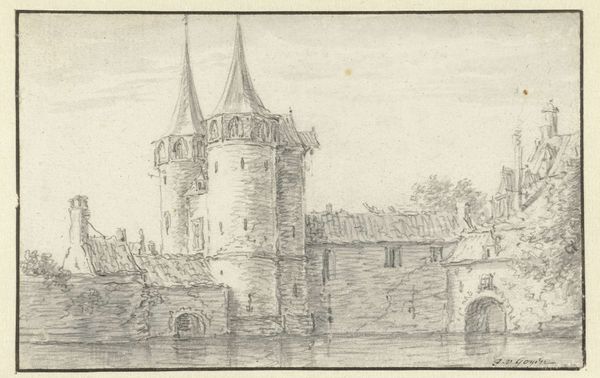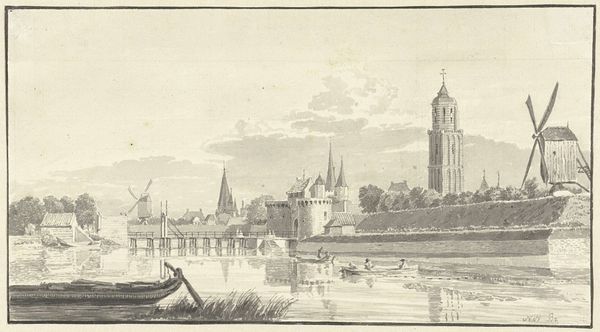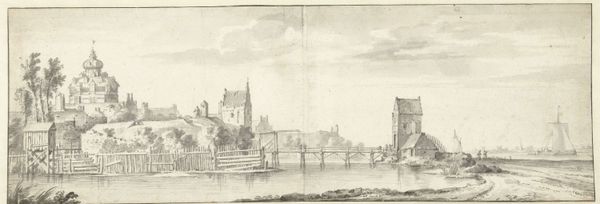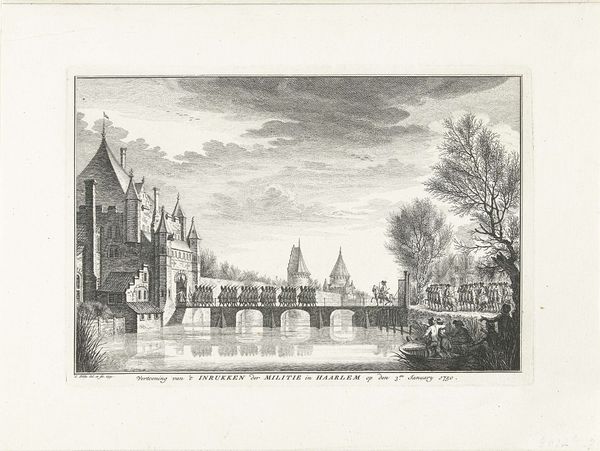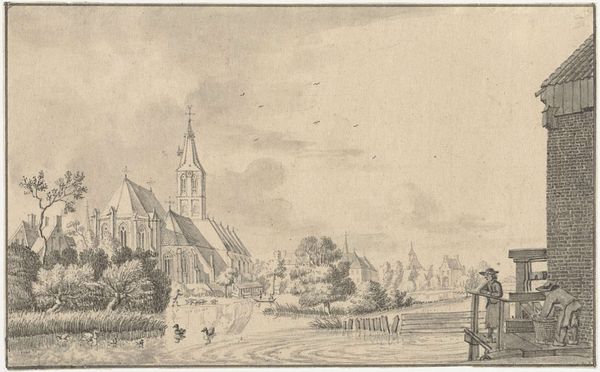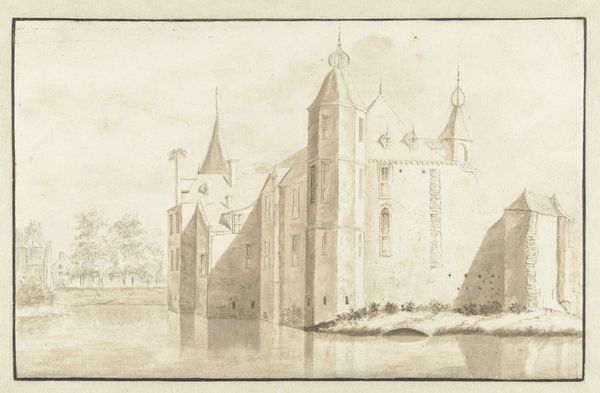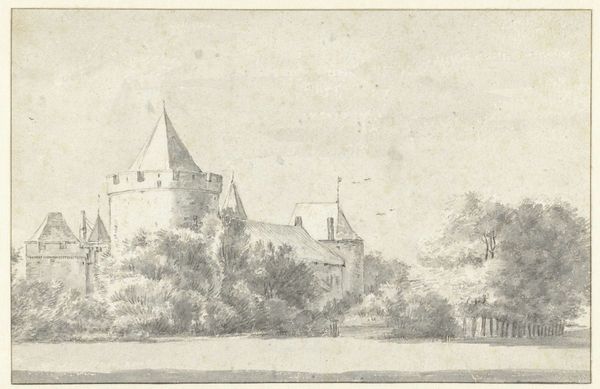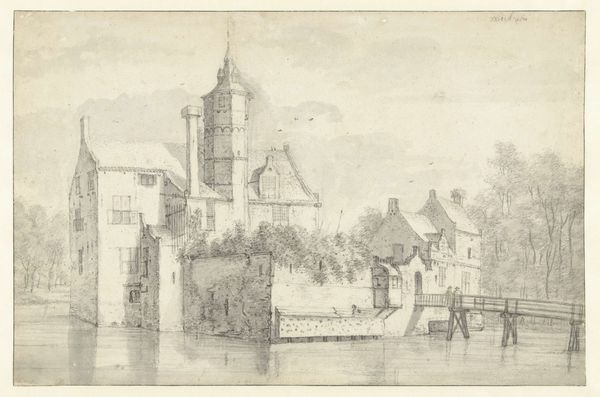
drawing, etching
#
drawing
#
pen sketch
#
etching
#
landscape
#
romanticism
#
cityscape
Dimensions: height mm, width mm
Copyright: Rijks Museum: Open Domain
Curator: What a delicate and charming cityscape! Editor: It has a sort of melancholic beauty, doesn't it? The grey tones really set the mood. Curator: Indeed. What we are looking at is Domenico Quaglio’s "Landschap," created sometime between 1804 and 1821. It’s a remarkable etching—a pen sketch capturing a moment in time. Editor: The composition is striking. The way the artist uses light and shadow, particularly in the reflections on the water and textures in the foliage, create depth. Note how the buildings are meticulously detailed, yet somewhat softened, suggesting distance. Curator: Quaglio was very much a product of his time, deeply involved in the burgeoning Romantic movement. This cityscape really speaks to the Romantic era's fascination with picturesque scenery and an idealised vision of towns, even somewhat medieval towns. Editor: You can almost feel the stillness. The verticality established by the towering steeples and balanced with the horizontality of the bridge is really nicely done, creating this interesting grid of forms, isn't it? Curator: The very act of documenting and circulating such images, particularly etchings, allowed wider society to engage with these urban spaces. Views like these helped shape popular ideas about cities and heritage. Editor: It is like looking through a historical window. But also consider the tonal range—it's quite narrow. The whole piece hinges on a restrained use of blacks and whites, the contrast generating the atmospheric perspective. Curator: These subtle washes, gradations and shades provide that real tangible and sensory connection. This landscape isn't just seen; it's experienced. Editor: Absolutely, and those minimal forms and textures still suggest complexity. They are very efficiently used. The bridge becomes a compositional focus in linking the buildings and trees. I can look at it for quite some time. Curator: It's interesting to consider how images like this influenced architectural preservation and even tourism during that period. Romanticism really fuelled this idea of 'heritage'. Editor: It really speaks for itself, beyond any interpretation, no? Its visual organisation communicates across time. The visual architecture invites us into its aesthetic world.
Comments
No comments
Be the first to comment and join the conversation on the ultimate creative platform.
